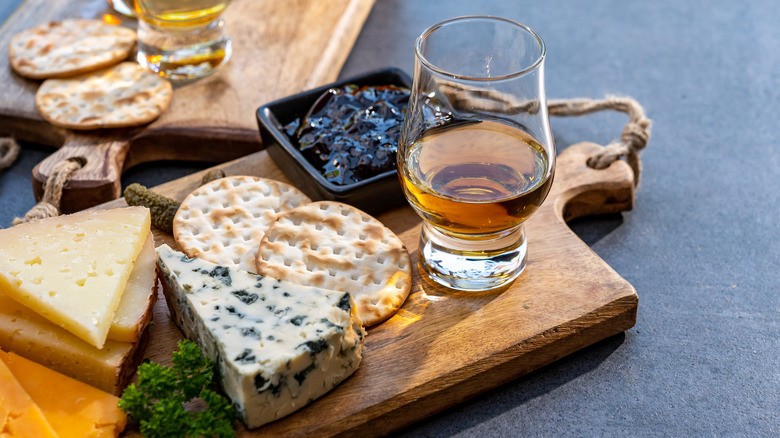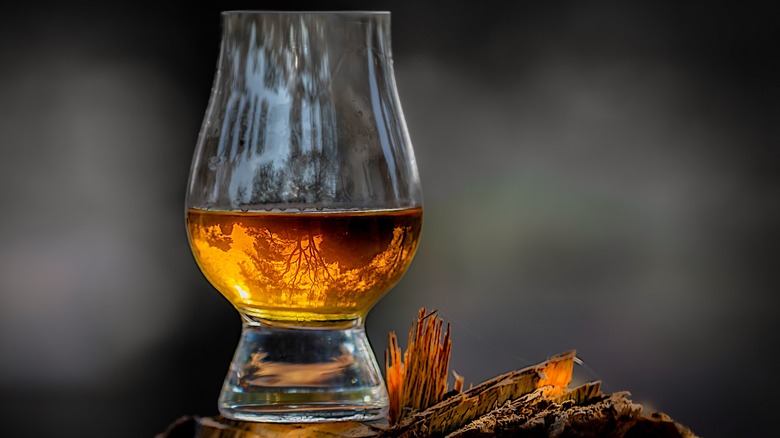The Best Cheese To Pair With Unpeated Scotch Whiskey
Whether you're choosing between whiskey and whisky, single-grain or single-malt, Irish or Japanese, one thing's for sure: Pairing the strong flavors of this dark spirit with food poses an interesting challenge. Scotch whisky, though often consumed as a digestif after a long meal, doesn't need to be served on its own to be fully appreciated, and can even be enhanced by a little cheese on the side.
John Montez, Assistant Manager of Education at Murray's Cheese, offered Food Republic expert advice on how to pair unpeated Scotch with the perfect cheese: "Unpeated Scotch, with its fruity and clean profile, is a versatile pairing partner for cheese. Most aged cheeses will pair well here, but I recommend a Danish blue." Danish blue cheese, also known as "Danablu," is relatively mild compared to other blue cheeses. Though inspired by French blues like Roquefort, the usage of cow's milk instead of sheep's milk lends it a flavor closer to that of an Italian gorgonzola.
"Danish blues are unique in flavor because they are made with homogenized milk," Montez explains. Homogenization breaks down the fat and proteins in milk into smaller particles, which can give the cheese more flavor thanks to a higher exposure to enzymes. "During the aging process," he continues, "this causes the development of spicy and fruity ketones. This pulls the fruitiness of the whiskey." Add in some apple slices and walnuts on the side, and you've got yourself a perfect pairing for before or after dinner.
Unpeated vs. peated Scotch
So, when we're talking about unpeated Scotch, what exactly are we referring to? Scotch is made from malted barley, barley grains that have been soaked in water until they germinate. These malted grains are often smoked using peat, which is a mixture of decomposed plant matter and soil. That smoky, earthy flavor associated with the peatiest Scotch whiskies comes from this process; without it, unpeated Scotch tastes more light.
Both peated and unpeated Scotch naturally have notes of fruit, honey, and citrus, but these are more evident in unpeated Scotch, since those flavors don't have to compete with the woody, vegetal notes that come from peat. Unpeated Scotch also tends to be sweeter, and can have flavors reminiscent of ginger, baking spices, chocolate, and toffee. This makes it better for milder Danish blue cheese, whereas a smoky peated Scotch would be better able to stand up to a funky blue like Roquefort or Stilton.
If you're not a blue fan, there are still a few great options at your disposal when pairing cheese with Scotch. A fruitier bottle would go well with something creamy and tangy, like goat cheese or gorgonzola. Better yet, look to dessert, where a slice of rich cheesecake will perfectly offset those beautiful citrusy notes.


